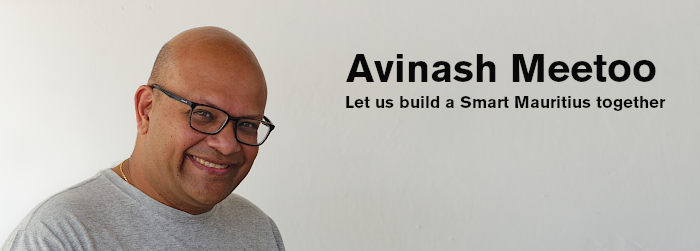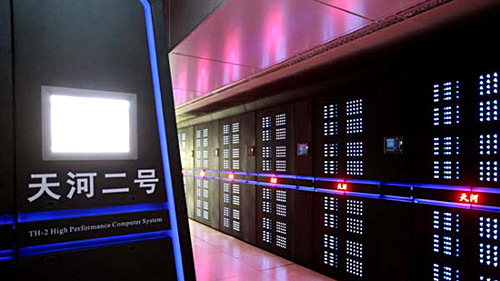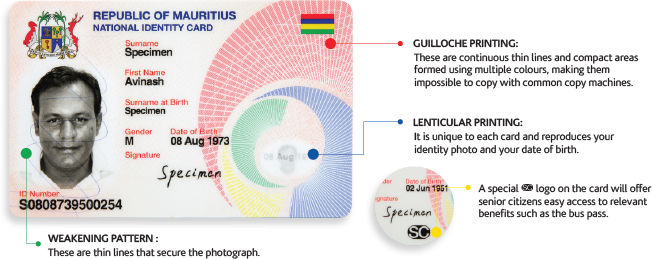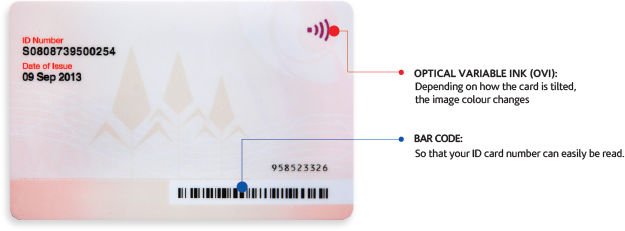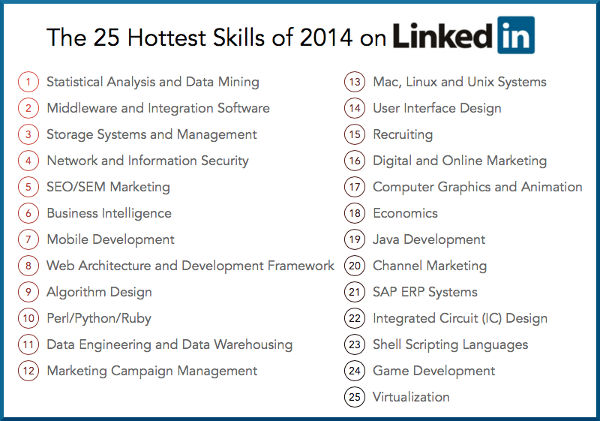
In December 2014, LinkedIn analyzed the skills and experience data in over 330 million LinkedIn member profiles to answer the question “Who’s getting hired and what are they doing?”. The above image shows the 25 Hottest Skills of 2014. Maybe a better way of looking at things would be to put these jobs in different categories to try to answer “Who’s getting hired and what field they are getting in?”:
Information Technology – Data Science
- Statistical Analysis and Data Mining
- Business Intelligence
- Data Engineering and Data Warehousing
- SAP ERP Systems
Information Technology – Infrastructure
- Middleware and Integration Software
- Storage Systems and Management
- Network and Information Security
- Mac, Linux and Unix Systems
- Virtualization
- Shell Scripting Languages
Information Technology – Software Development
- Mobile Development
- Web Architecture and Development Framework
- Algorithm Design
- Perl/Python/Ruby
- Java Development
Information Technology – User Experience
- User Interface Design
- Computer Graphics and Animation
- Game Development
Digital Marketing
- SEO/SEM Marketing
- Marketing Campaign Management
- Digital and Online Marketing
- Channel Marketing
Other
- Recruiting
- Economics
- Integrated Circuit (IC) Design
![]()
It is clear that Information Technology rules supreme. 72% of the jobs are IT jobs in data science, infrastructure, software development and user experience. We can even argue that all the digital marketing jobs as well as IC design are in IT increasing the proportion to 92%.
This also means that schools and universities will have to adapt to provide classes in these high-demand fields for the sake of the young people currently studying but also for the enterprises in Mauritius as well as the country as a whole.
Let’s hope they do. Signs are not very encouraging though with, for example, the University of Mauritius being still stuck in the 20th century. What do you think?
